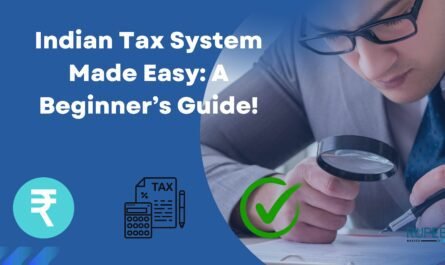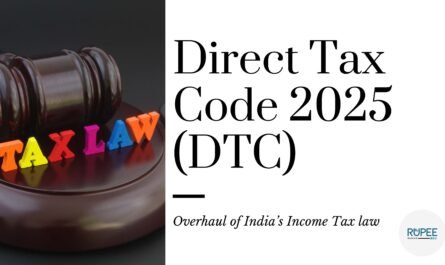Cess in India: A Simple Guide to Its Role in Income Tax and GST
Taxation in India is a major source of revenue for the government, and apart from regular taxes, there’s an additional charge called Cess. This is a special-purpose tax levied to fund specific initiatives like education, health, or infrastructure. Unlike regular taxes, cess is collected over and above the tax liability and is strictly used for the purpose it’s meant for. In this blog, we’ll break down how Cess works in Income Tax and GST, how it differs from regular taxes, and where it’s applied.
What is Cess?
Cess is a tax on tax imposed by the government for a specific purpose. For example, it can be used to fund education, healthcare, or infrastructure projects. The key difference between cess and regular tax is that cess collections are earmarked for a particular purpose and cannot be used for general government expenses.
Cess in Income Tax
Under the Income Tax Act, cess is an additional charge on your total tax liability. Here’s how it works:
- Health and Education Cess:
- A 4% cess is applied to your total income tax (including surcharge).
- This money is used to fund health and education initiatives across the country.
- Earlier Cesses:
- Before 2018, there were separate cesses like Education Cess (2%) and Secondary and Higher Education Cess (1%).
- These were merged into the current Health and Education Cess.
Who Pays It?
All taxpayers, including individuals, HUFs, firms, and companies, are required to pay this cess.
Cess in GST
In the Goods and Services Tax (GST) system, cess is mainly applied to luxury and sin goods (like tobacco, aerated drinks, and luxury cars). Here’s how it works:
- Compensation Cess:
- This cess was introduced under the GST (Compensation to States) Act, 2017.
- Its purpose is to compensate states for any revenue loss due to GST implementation.
- It applies to specific goods like tobacco, coal, aerated drinks, and luxury cars.
- The rate varies depending on the product.
- Key Points About GST Cess:
- It’s only applicable to specific goods notified by the government.
- Unlike regular GST, Input Tax Credit (ITC) cannot be claimed on cess.
- Exporters and suppliers to Special Economic Zones (SEZs) are exempt from paying cess if they qualify for zero-rated benefits.
How is Cess Different from Regular Tax?
| Aspect | Regular Tax | Cess |
|---|---|---|
| Purpose | General government revenue | Specific initiatives (e.g., education, health) |
| Usage | Can be used for any government expense | Strictly used for the defined purpose |
| Imposition | Directly on income or goods/services | Additional charge over tax |
| ITC Eligibility (GST) | Input Tax Credit available | No ITC for cess |
| Duration | Long-term revenue source | Temporary, until the goal is achieved |
Where is Cess Applied?
Cess is applied in various areas, including:
- Income Tax:
- All taxpayers pay Health and Education Cess on their income tax.
- GST:
- Cess is applied to specific goods like tobacco, coal, aerated drinks, and luxury cars.
- Other Sectors:
- Infrastructure Cess: Earlier applied on vehicles (before GST).
- Swachh Bharat Cess: Earlier applied on services (now part of GST).
- Krishi Kalyan Cess: Earlier applied on services (now discontinued).
List of GST Items on Which Cess is Applicable (with Rates)
Under the GST regime, Compensation Cess is levied on specific luxury and demerit goods. Here’s a list of some common items along with their applicable cess rates:
| Item | GST Rate | Compensation Cess Rate | Total Tax (GST + Cess) |
|---|---|---|---|
| Tobacco Products | |||
| – Cigarettes (length > 65 mm) | 28% | 5% + ₹1,591 per 1,000 sticks | 28% + ₹1,591 per 1,000 sticks |
| – Cigarettes (length ≤ 65 mm) | 28% | 5% + ₹1,591 per 1,000 sticks | 28% + ₹1,591 per 1,000 sticks |
| – Pan Masala (without tobacco) | 28% | 160% | 28% + 160% |
| – Chewing Tobacco | 28% | 160% | 28% + 160% |
| Aerated Drinks | 28% | 12% | 28% + 12% |
| Coal | 5% | ₹400 per tonne | 5% + ₹400 per tonne |
| Luxury Cars | |||
| – Cars (length > 4m, engine > 1500cc) | 28% | 20% | 28% + 20% |
| – Electric Vehicles (luxury) | 28% | 22% | 28% + 22% |
| Motor Vehicles | |||
| – SUVs (length > 4m, engine > 1500cc) | 28% | 22% | 28% + 22% |
| – Mid-size cars (engine ≤ 1500cc) | 28% | 1-15% (depending on type) | 28% + 1-15% |
| Aircraft | 5% | 3% | 5% + 3% |
| Caffeinated Beverages | 28% | 12% | 28% + 12% |
| Bidis | 28% | ₹12 per 1,000 sticks | 28% + ₹12 per 1,000 sticks |
Key Notes on GST Cess
- Purpose: Compensation Cess is levied to compensate states for revenue loss due to GST implementation.
- No Input Tax Credit (ITC): Cess paid on inputs cannot be claimed as ITC.
- Temporary Nature: The cess is applicable only until the revenue loss is compensated (originally until July 2022, but extended as needed).
- Exemptions: Exporters and suppliers to SEZs are exempt from paying cess if they qualify for zero-rated benefits.
This list provides a clear understanding of the items subject to GST Compensation Cess and their respective rates. It helps businesses and consumers identify the additional tax burden on specific goods.
Conclusion
Cess is a powerful tool for the Indian government to raise funds for specific developmental needs. While Income Tax Cess is a mandatory charge for all taxpayers, GST Cess is selectively applied to luxury and sin goods. Unlike regular taxes, cess is strictly used for its intended purpose, ensuring focused development in areas like education, health, and infrastructure.
“Don’t count the days; make the days count.”




